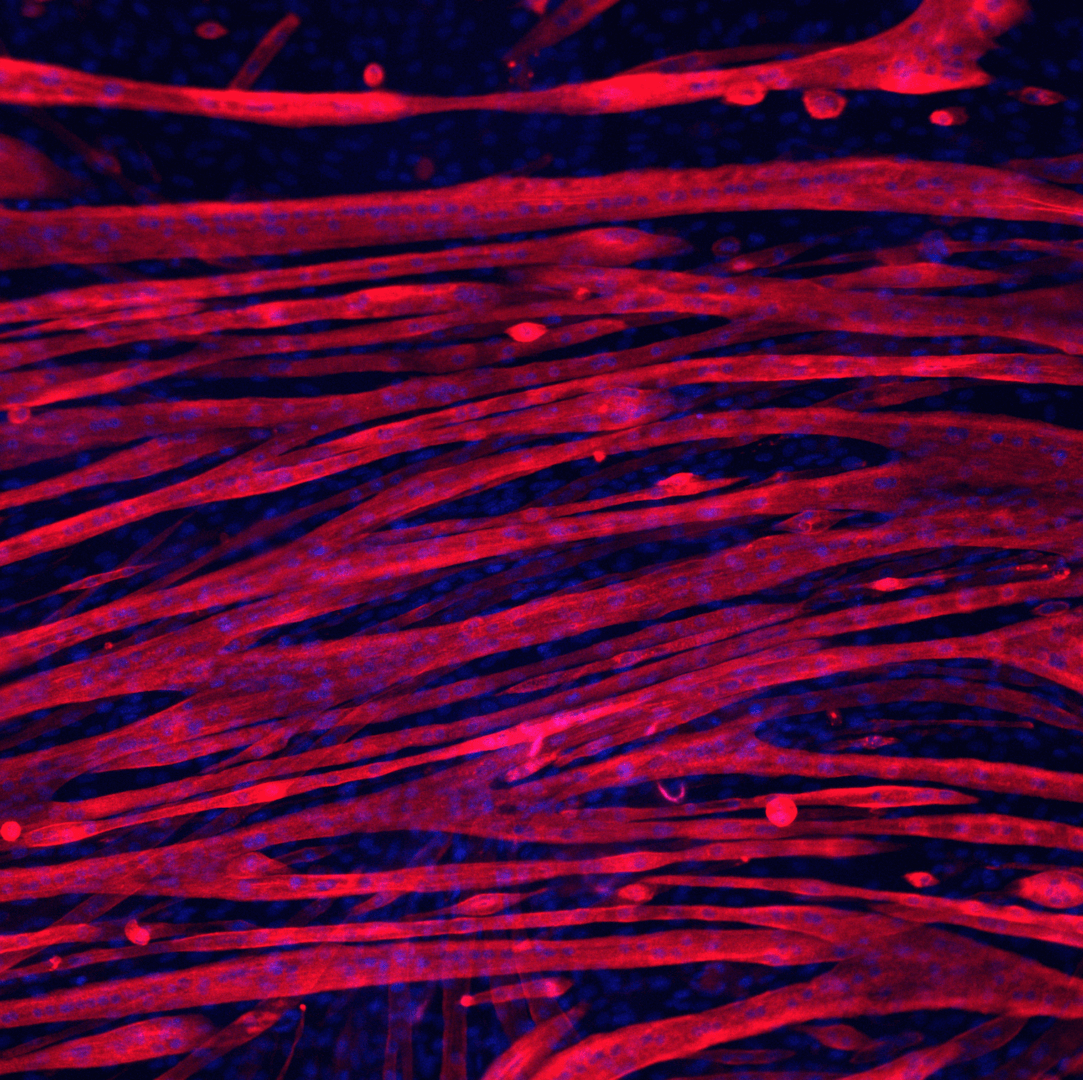USC Viterbi researcher Megan McCain and her colleagues have devised a way to develop bigger, stronger muscle fibers. But instead of popping up on the bicep of a bodybuilder, these muscles grow on a tiny scaffold or “chip” molded from a type of water-logged gel made from gelatin.
First authors Archana Bettadapur and Gio Suh describe these muscles-on-a-chip in a new study published in the journal Scientific Reports.
During normal embryonic development, skeletal muscles form when cells called myoblasts fuse to form muscle fibers, known as myotubes.
In past experiments, mouse myotubes have detached or delaminated from protein-coated plastic scaffolds after approximately one week and failed to thrive.
In this experiment, the researchers fabricated a scaffold from gelatin, a derivative of the naturally occurring muscle protein collagen, and achieved much better results. The researchers anticipate that human myotubes would thrive equally well on gelatin chips. These new and improved “muscles-on-a-chip” could then be used to study human muscle development and disease, as well as provide a relevant testing ground for potential drugs.
“Disease and disorders involving skeletal muscle — ranging from severe muscular dystrophies to the gradual decrease in muscle mass with aging — dramatically reduce the quality of life for millions of people,” said McCain, assistant professor of biomedical engineering at USC Viterbi, and stem cell biology and regenerative medicine at the Keck School of Medicine of USC. “By creating an inexpensive and accessible platform for studying skeletal muscle in the laboratory, we hope to enable research that will usher in new treatments for these patients.”





